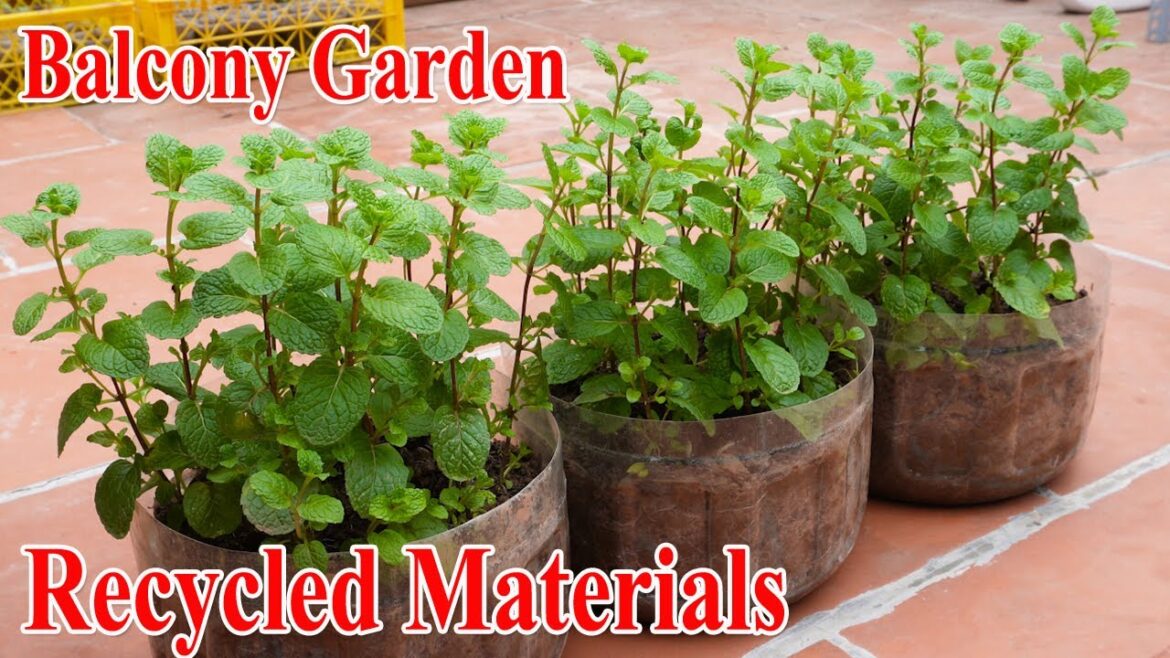🌿 Beginner’s Guide: How to Start a Balcony Vegetable Garden Using Recycled Materials
Living in a city doesn’t mean you can’t grow your own vegetables. With just a few recycled materials and a small balcony, you can create a thriving mini-garden that is both eco-friendly and rewarding.
This guide is perfect for beginners who want to grow fresh vegetables using low-cost and sustainable methods.
♻️ Why Use Recycled Materials?
✅ Reduce plastic and household waste
✅ Save money on pots and garden supplies
✅ Get creative with DIY gardening
✅ Promote sustainable living
🧰 Materials You Can Recycle for Gardening
🥤 Plastic bottles (1.5L – 5L) → Great for herbs and leafy greens
🪣 Old buckets or paint cans → Ideal for tomatoes, eggplants, and potatoes
🛢️ Used cooking oil containers → Good for root vegetables like carrots or garlic
📦 Styrofoam boxes or crates → Excellent for lettuce, spinach, and microgreens
🧺 Laundry baskets or storage bins → Perfect for large mixed vegetable beds
👕 Old cloth or rice sacks → Can be used as grow bags
🪵 Wooden pallets → Useful for vertical gardens or planter boxes
🌱 Steps to Build Your Balcony Garden
1. Choose Your Space Wisely
Select a balcony or rooftop corner with at least 5–6 hours of sunlight daily.
Make sure the area has good drainage to avoid water accumulation.
2. Select Easy-to-Grow Vegetables for Beginners
Start with vegetables that grow well in containers:
Lettuce
Mint
Basil
Garlic
Tomatoes (cherry)
Chili peppers
Spinach
Green onions
3. Prepare Your Recycled Containers
Clean thoroughly with soap and water.
Add drainage holes at the bottom using a screwdriver or heated nail.
Place a layer of small stones or gravel at the bottom before adding soil.
4. Make Your Own Potting Mix
Use this simple DIY mix:
50% garden soil
30% compost or organic kitchen waste compost
20% sand, cocopeat, or rice husk (for aeration)
5. Plant Your Seeds or Seedlings
Read seed packets for correct planting depth and spacing.
Water lightly after planting.
Label each container for easy care and identification.
6. Water & Sunlight Management
Water once or twice daily depending on weather (avoid overwatering).
Rotate containers every few days for even sunlight exposure.
7. Fertilize Naturally
Use banana peel water, crushed eggshells, or compost tea every 2–3 weeks.
Avoid chemical fertilizers to keep your produce organic.
🌸 Creative Ideas for Balcony Garden from Recycled Items
Material Use Idea
2L Plastic Bottle Hanging herb garden or vertical planter
Foam Box Lettuce or leafy green bed
Old Shoe Rack Tiered vegetable pots
Wooden Crates Raised beds or square-foot garden
Tin Cans Mini containers for mint, basil, or chives
🧼 Maintenance Tips for Busy Gardeners
Check for pests or mold weekly.
Prune dead leaves and overgrowth.
Clean containers monthly to avoid salt build-up.
Use mulch (dry leaves, paper) to retain soil moisture.
✅ Benefits of Balcony Gardening with Recycled Materials
Grow your own fresh, chemical-free vegetables
Save money on grocery bills
Improve air quality and mental well-being
Help the environment by reducing waste
🌟 Conclusion
Starting a balcony vegetable garden with recycled materials is not only easy for beginners but also a meaningful step toward sustainability. With creativity, consistency, and care, even a tiny balcony can turn into a lush, edible paradise.
So grab those old containers and get growing — your urban garden journey begins today! 🌱
#GardenIdeasTips #balconygarden #balconygardening #mybalconygarden #balconygardener #smallbalconygarden #urbanbalconygarden #balconylife #balconydecor
#balconydesign #rooftopgarden #rooftopgardening #rooftopgardener
#terracegarden #urbanfarming #urbanagriculture #roofgarden #rooftopviews
#containergardening #verticalgarden #homegardening #gardeningtips #greenthumb
#plantsmakepeoplehappy #plantsofinstagram #gardeninspiration
Link fanpage : https://www.facebook.com/people/Garden-Ideas-Tips/100084633073257

